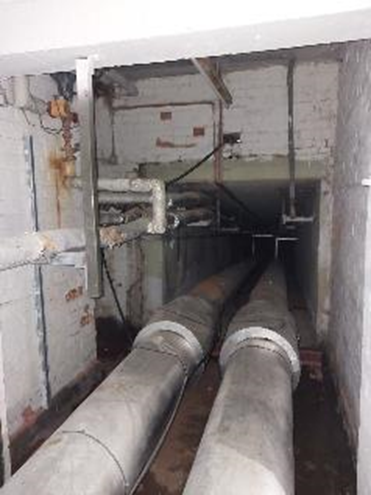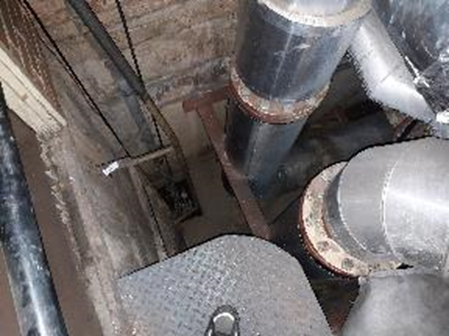
Mike North
-
Posts
290 -
Joined
-
Last visited
Posts posted by Mike North
-
-
-
Not been a legal expert, I suspect that the building is currently compliant with the use as it is. You want to make a material change to your property by changing the use of the first and second floor to residential bringing BR into play, and now want your tenant to pay 57% of the cost? I wouldn’t have thought you couldn't make any claim on the tenant.
-
The only way is to take photos of each step, ensure that there are some distinguishing marks on the frame in each photo. This can then be at any point in time to prove the frame was installed correctly
-
To my knowledge, all fire doors are manufactured as none smoke doors, it is the inclusion of a smoke seal (fin or brush) in the intumescent that makes it in S. There is no difference in the allowable gaps (except the threshold)
-
Building regs looks at each element and tells you what you need to do. Using BS9999 would allow you decrease some fire protection by increasing others. The RRO also allows this by risk assessing the changes. An example would be increasing the single travel distance by installing more fire detection in a building.
-
I would suggest that the alarm for a semi is overkill, the maximum I would put in is an L3 with a CO detector wherever there is a gas appliance (unless there are vulnerable people)
Thanks to the loft conversion all doors (except for wet rooms) that are connected to the stairwell will need to be FD30S.
Unfortunately building regs do not allow for variation, once it is build you can then use the RRO to mix and match
-
The regulations allow wall coverings as long as they are controlled and are at least B-s3, d2
-
1. This will be detailed in the fitting instuctions
2.This will be detailed in the fitting instuctions
3. You could always have the frame manulactured bespoke as long as the density of the wood os the same or better
4. Basicaly, no oil based
5. This will be detailed in the fitting instuctions
-
Your best cause of action is to find a couple of suppliers who are willing to supply a pair of bespoke doors sets with the finish you require to the correct size. The door will come with fitting instructions that any competent joiner can follow, anyone can install the door. For peace of mind take images of
1. Both sides, the fixing of the frame to the opening.
2. Both sides, the sealing of the frame to the opening.
All other inspections can be done later, this can be used to prove the door was instaled to the installation instructions
-
Dorgarda are not illegal, however some property owners/ landlords prohibit there use
-
If it’s a fire door there is the possibility of a £2000 fine for whoever has control over the door (the person sat right outside)
-
When you have chosen the door, ask for the global assessment this will detail what you need to do, the allowable gaps, the hardware allowed, the positioning of the hardware the lipping type and thickness. See the attached
-
BS 9999
Maintanence
I.6.1 General
In addition to the checks recommended in I.2, I.3, I.4 and I.5, the checks described in I.6.2 and
I.6.3 should be undertaken once every six months.
Arrangements should be made for six-monthly inspections and tests to be carried out by competent
persons on the fire detection and fire alarm systems, the sprinkler systems, any extinguishing
systems, the emergency and escape lighting systems and the firefighters lift, for any defects found
to be logged and the necessary action taken, and for certificates of testing to be obtained.
I.6.2 Fire doors
All fire doors should be inspected every six months. In particular, it should be ensured that:
a) heat-activated seals and smoke seals are undamaged;
b) door leaves are not structurally damaged or excessively bowed or deformed;
c) gaps between the door leaf and the frame are not so small as to be likely to bind, or so large
as to prevent effective fire and smoke-sealing;
d) hanging devices, securing devices, self-closing devices and automatic release mechanisms are
operating correctly.
-
There must be a “responsible person”, this can be an organisation such as a management company or agent. All the occupants can be jointly responsible, if the lawyer insists on a named individual, congratulate them on their appointment.
-
A single compartment can have different purpose groups its called ancillary use
Approved Document B Vol 2 2019 Amendment 2020
0.21
Where a building or compartment has more than one use, it is appropriate to assign each different use to its own purpose group in the following situations.
a. If the ancillary use is a flat.
b. If both of the following apply.
i. The building or compartment has an area of more than 280m2.
ii. The ancillary use relates to an area that is more than one-fifth of the total floor area of the building or compartment.
c. In ‘shop and commercial’ (purpose group 4) buildings or compartments, if the ancillary use is storage and both of the following apply.
i. The building or compartment has an area of more than 280m2.
ii. The storage area comprises more than one-third of the total floor area of the building or compartment.
So given that the total area of the building 300m2 and the storage is 100m2, the storage area is 1/3 of the total area then Yes.
Each room should have its own occupancy limit based on the space factor for the purpose group
-
Looking at the image, its difficult to see how else a concealed closer could be fitted.
Get the manufacture and model off the closer and look for the cert.
see page 3 attachedGEZE_Certificate_EN_759072.pdfGEZE_Certificate_EN_759072.pdfGEZE_Certificate_EN_759072.pdfGEZE_Certificate_EN_759072.pdf
-
Stairwells and escape routes should be sterile areas, your landlord is correct.
-
If the FB have to get to the risers in an emergency, I would have thought that the replacement of a door would be the least of your problems
-
I couldn’t possibly answer, there are too many questions that need to be answered.
How large are the external areas
What is the internal layout
What are the escape routes
What is the age of the pupils
What is the mental capacity of the student
What you need is a fire risk assessment completing, considering legally the school will have completed one, do you want to pay for another one to be done?
-
I would have a word with the local fire brigade, something doesn't sound right.
The installer should leave the installation compliant, that includes sealing the door to frame correctly, here should be no gaps and it should be fire stopped (this is a legal requirement). I would request a copy of the installation certificate (FIRAS, TRADA or the contactors competency to instal fire doors)
The price, for a fully installed certified fire door is in the right ballpark, it’s the certification of the installation that costs
The decoration is debatable, the cost between a fire door installer and a decorator can be considerable do on a large job it is probably best to employ separate trades.
-
I think that would be an issue for the oricinal instalers and Kent gateway to discuss as it sounds line the original instal was wrong
-
If you put unapproved furniture on the door it will not longer be a certified door.
-
If the door is fire rated, then so should the glass
-
I currently have several 1930’s buildings connected to a district heating main.
At one end there is a subterranean plant room

At the other is a pit

For the subterranean plant room end I am happy to rely on the external door to the space as that is all there is in the plantroom.
However I am looking for advice as to what to do with the pit end which is in the actual boiler room.
What fire stopping would you suggest if any?

Mr
in Fire Doors and Accessories
Posted
Perhaps the most cost-effective solution might be to consider purchasing a new bed that can easily fit through the door.